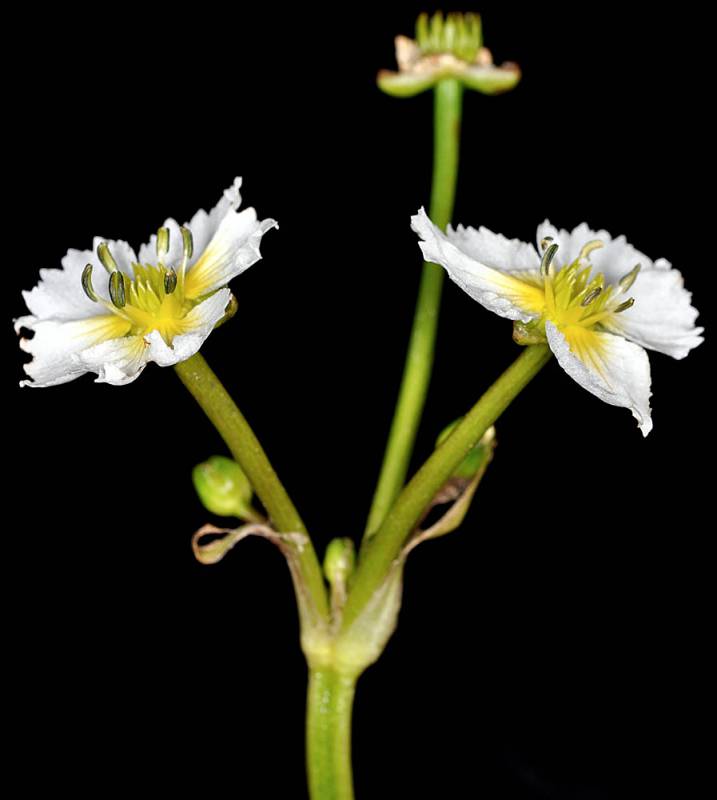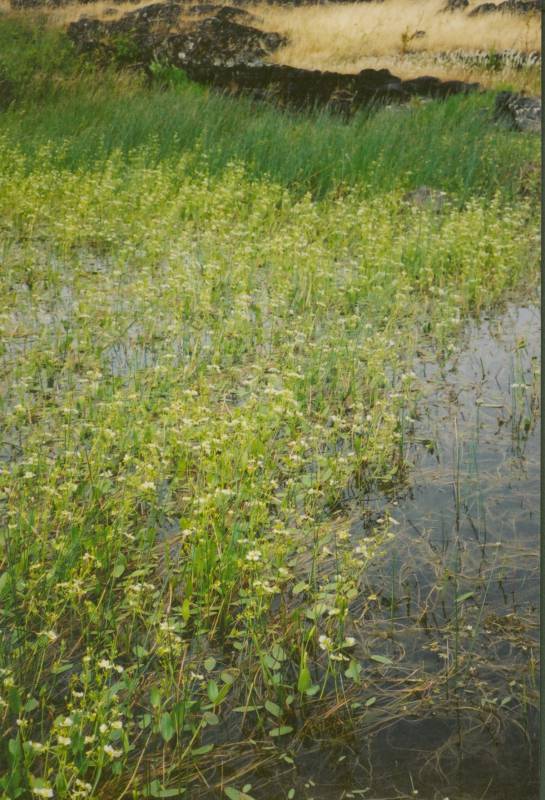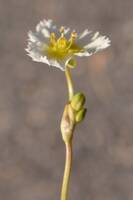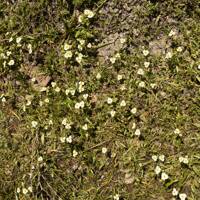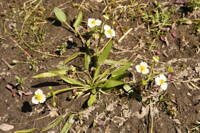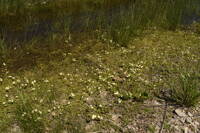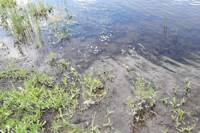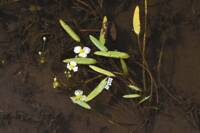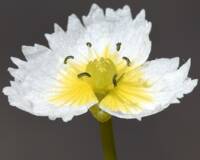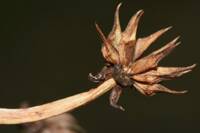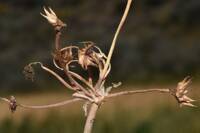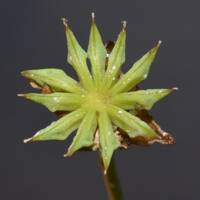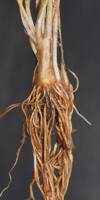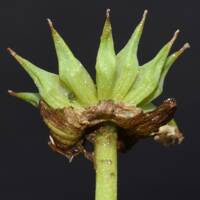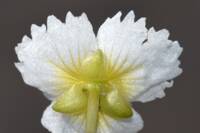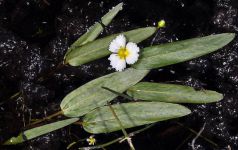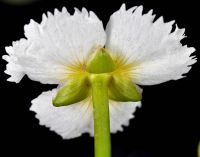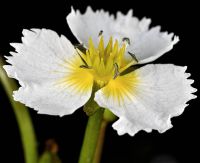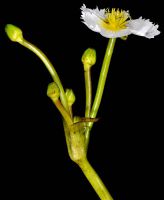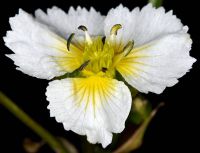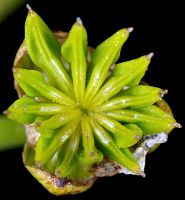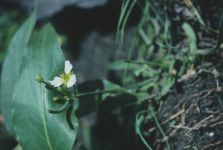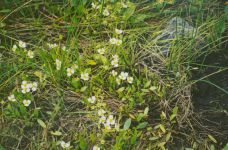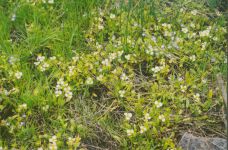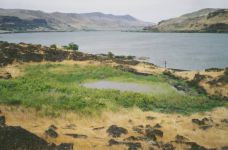Distribution: Known only from Klickitat County in Washington; Washington to California, east to southwest Idaho and western Navada.
Habitat: Sloughs, ditches and marshy fields.
Flowers: June-July
Origin: Native
Growth Duration: Perennial
Conservation Status: Threatened in Washington (WANHP)
Pollination: Moths, self-pollination
Aquatic, herbaceous, scapose perennials 2-4 dm. tall from a rhizome, the leaves about equaling the inflorescence.
Leaves clustered on the short rhizome, long-petiolate, the blades linear to oblong-lanceolate, rounded or tapering at the base, 3-5 cm. long, erect to floating.
Inflorescence a simple, involucrate umbel or a panicle of 2 to 4 whorles of flowers; pedicles 2-6 cm. long, spreading to recurved; sepals 3, 4-5 mm. long, greenish, persistent; petals 3, 7-10 mm. long, white to pink, spreading, fringed, deciduous; stamens 6, opposite the petals; pistils 9-15, in a single whorl.
Achenes flattened, divergent, strongly ribbed on each margin and depressed between, the body about 4 mm. long with an erect beak of equal length.
Publication: Plantas Hartwegianas imprimis Mexicanas. .. 341. 1857.
PNW Herbaria: Specimen records of Damasonium californicum in the Consortium of Pacific Northwest Herbaria database
WA Flora Checklist: Damasonium californicum checklist entry
OregonFlora: Damasonium californicum information
E-Flora BC: Damasonium californicum atlas page
CalPhotos: Damasonium californicum photos

